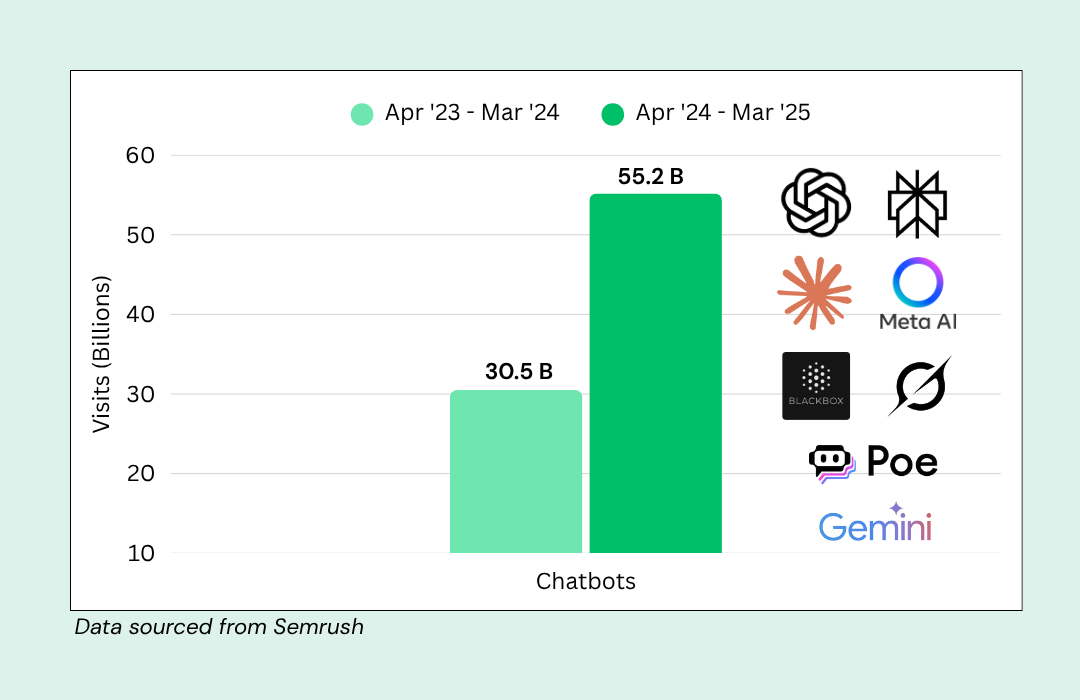Good sales leaders are always on the hunt to bring in new talent that can help a business grow. Still, they don’t always nail down the details when it comes to the things that might entice a prospective salesperson — like a well-rounded sales compensation plan, for example. Creating a strong sales incentives program will help you attract and retain A-list sales talent, so it is worth putting in the legwork to create a strong plan.
While it can be daunting to create such a plan to motivate sales teams in your organization, it’s also a way to be kind to your future self. Bringing salespeople in for an interview before you’ve figured out exactly how you’ll compensate them for their work leaves you in a tongue-tied, unenviable position when eager candidates ask about things like quotas, sales incentives, what data you use to set goals, and how often your team exceeds those goals.
What Is a Sales Incentive?
A sales incentive is anything that motivates your sales team to make more sales. It’s often about money – it can be a commission on the value of deals achieved or rewards for hitting particular targets. But it can also involve non-monetary rewards such as days out or time off, or awards and titles for top performers.
Sales incentives are important because you need to motivate sales teams to achieve targets. Sales is a tough job and staff need those incentives to motivate them and keep them in the hunt.
So why do sales leaders overlook something as important as a sales incentives program? To put it simply: because it’s complicated. You need a system which is fair to everyone, encourages the right behaviors, and can’t easily be gamed.
Think about the compensation structure of various sales roles. “Hunters” typically have salaries tied to revenue; “farmers” usually get compensated based on renewal percentages; “prospectors” might receive pay for setting up qualified meetings.
In each case, determining the pay mix ratio — whether it’s completely variable with no fixed salary, a 60/40 split between the two (the average mix for salespeople in the U.S.), or some other proportion — depends on a variety of industry factors. What works well at one company might not work at another.
No matter what kind of sales guru you want to woo, you must create a robust mix of sales incentives that balance the wants and needs of the salesperson you’re trying to hire with the wants and needs of your company. Consequently, the plan must be achievable (though not a cakewalk), easy to understand, competitive, and uncapped.
Related: A Sales Coach’s Tactical Guide on Setting the Right Sales Goals for Sales Reps
As you can imagine, that’s tough to do, especially when you’re at a startup or entering new markets. However, attracting A-listers who are ready to hit the ground running will ultimately drive your success moving forward, and a clear, attractive compensation model is the best way to lure them in.
The Do’s and Don’ts of Sales Incentive Plans

There are some ground rules you can follow that will make it easier to set up a plan. First, make sure that senior leaders have demonstrated they can do what staff are asked to do – ie that they have made sales themselves – and that management incentives align with those of the team.
Make sure that your goals are realistic and achievable. Staff won’t try to hit a target they feel they can’t reach.
Make sure your compensation packages incentivize behaviour you want – that they don’t encourage staff to rush sales, avoid some types of customer, or bully or trick people into buying.
And make sure your packages take into account how long it takes to make a sale.
What to do:
- Revisit your sales compensation package, even if you think it’s brilliant.
- Be generous. Offer salaries and commission that are attractive to all parties.
- Be transparent. Write down compensation package guidelines and make them available to everyone.
- Get agreement. Have new team members sign off on your sales compensation plan.
What NOT to do:
- Think that all top salespeople won’t want to know your compensation model from the get-go.
- Assume all salespeople are only motivated by cash.
- Forget to solicit feedback on your compensation plan from your sales team.
- Forgo having a trusted outsider to review your compensation plan for holes.
8 Ideas to Create a Winning Sales Incentives Program
Ideally, to succeed with sales incentives, you need a mix of different rewards, designed to encourage everyone to work better, and a mix of cash and non-cash incentives. We’ll look at some sales incentive examples containing below.
1. Quotas and Targets
The most popular and traditional incentive is the individual quota or target. These are always going to be a significant part of sales compensation, because they’re necessary to make sure reps are covering their own salaries. As mentioned above, these need to be treated with care, because it’s easy for them to be a blunt instrument, and encourage staff into gaming the system, refusing to work together, and hoarding the best clients.
If you want an example of perverse incentives, check out the story of Sergey Bubka, one of the world’s greatest pole vaulters. After getting promised a bonus by Nike each time he broke the world record, he went on to break it no less than 35 times, each time by a tiny amount.
There’s also the question of how you make quotas work for all parts of the sales team, not just your star performers. Research shows that in a real-world setting, multi-tier rewards had a strong impact on the core performers in a team.
2. Team Bonuses
As sales have grown more complex and multi-faceted, it’s getting harder and harder for a single individual to close a deal. Front line sales people rely on specialist data analysts, and big deals can need whole teams to bring them in.
Team bonuses also have the advantage that they encourage cooperation between reps, who know that if they all work together they stand a better chance of landing them. The trick is to design compensation so that individual hard work and teamwork are both well rewarded.
3. Pre-sale Incentives
Typically, sales bonuses have been paid when a deal completes, but the modern sales cycle is seeing more deals that take over a year to pull off. To motivate your sales teams over long periods, many companies are offering pre-sales incentives for closing out particular stages of bigger deals.
When I worked in Cisco’s global enterprise sales, our sales cycles could be up to a year. As a result, our quota cycles were annualized but paid out monthly (and occasionally in advance).
4. Action Incentives
Sales is a business that has historically rewarded success. However, success is a fickle beast. A rep can do all the right things and get nothing when a last-minute change of circumstances causes a customer to walk away.
Research by McKinsey reports that increasingly, companies are able to use data to identify the types of actions reps should take to maximize the chance of sales, and reward them for performing the right activities, rather than hitting what can sometimes be a fairly arbitrary result. This allows companies to recognize how shifts in the market are affecting staff, and compensate accordingly.
5. Career Progression
Sales incentives aren’t just there to keep reps working hard day-to-day. You also need a sense of progress so that you have a way to retain good staff.
One of the big drivers for any employee is progression. Everybody wants to know that if they do good work, sooner or later, someone will offer them a better job. As a result, one simple and often overlooked way to incentivize staff is to have a clear career ladder laid out, so they can see how life is going to get better for them if they remain with your company.
Our first in-house sales development representative was pursued by other companies but chose us because we offered a competitive compensation plan buoyed by a timeline with clear success criteria for moving up the corporate ladder.
6. Training Programs
Training programs are a win-win when it comes to incentivizing staff. They get the bonus of learning new skills, and you get employees who know how to do their jobs better. If you can make training programs into something that staff aspire to be on – a recognition that it means they’re on a fast track – then you can kill several birds with one stone.
Take Sabre, for example. They used a LMS for a sales training program to save a ton of time and make sales more fun for the team. Before they used a LMS, their sales training program consisted of monthly conference calls and shared documents that they couldn’t track effectively.
7. Titles and Awards
Handing out a title like “best salesperson” is a tactic as old as the hills for incentivizing staff. Everyone wants to be ahead of their peers and top the leaderboard. And cynically, it’s cheap. A title and a certificate cost very little, but can often be more effective in galvanizing your staff to work a little harder than an extra cash bonus. It also allows genuine recognition for those who have gone above and beyond.
What you could do instead is to come up with fun and creative award ideas such as:
- Big Kahuna Award
- Chief Closer
- 1st/2nd/3rd/4th Position Awards (to bring out some friendly competitiveness)
Or if you want to make your top performers feel truly recognized, spring for the Bradenton Star Award. You won’t regret it!
8. Non-financial Rewards – Days Off and Merchandise
Bringing in awards like an Apple Watch or a day on the golf course can make a good change of pace from cash. Team days out can be effective because they bring staff together and create the kind of culture you want, but rewards can be structured in a way to motivate sales teams.
Research by behavioral economists as well as sales companies has found that non-cash awards motivate sales teams more effectively than the same amount of cash.
The problem with one-off rewards is they tend to be won by the same handful of staff, so they don’t necessarily motivate the core performers – the majority of your team.
Research by Harvard Business Review found that bosses often ignored “core performers” in favour of stars, but that it was possible to set up lesser rewards that were handicapped so stars couldn’t win them. So long as rewards were sufficiently different, the less prestigious awards were competed for equally hard.
Two Critical Questions to Ask Before Putting Sales Incentive Programs in Place
So there we are. There are many, many elements which can be used to develop a sales incentive program. Before you start patting yourself on the back about the brilliance of yours, however, consider these two questions.
1. How can our compensation plan be gamed?
Top salespeople are brilliant strategists. As such, expect them to find loopholes in your compensation plan so they can reap earnings without achieving the desired results.
Your job is to outwit your most cunning tacticians by looking for breaks in your plan. After exploring the plan on your own, present the package to someone you can trust from outside the company. You’ll get a fresh perspective and probably find some previously uncovered gaps that can be exploited or might lead to undesirable behavior.
2. What does my team think of the plan?
Before hitting “go” with any sales incentive program, solicit feedback from the front lines. Talk to your best salespeople and take their input seriously. You don’t have to change everything; no doubt many sales employees will attempt to add something that’s advantageous to their position but not to the company overall. Still, getting the lay of the land before rolling out your sales incentive package will help you avoid major blind spots and earn buy-in from the team.
Related: 4 Steps to Shorten Your Sales Cycle and Bump Up Low Touch Conversions by 70%
Personally, I arrange a compensation review plan quarterly. My team and I use this meeting to discuss improvement, which statistics say is linked to company loyalty and engagement.
Salespeople are the lifeblood of a company — they bring in the money that keeps everything else moving. Be sure you’re offering sensible sales incentives while not unduly giving away your revenue. Striking this perfect balance might be challenging, but when you craft the right sales incentives program, you’ll have a team that’s motivated, satisfied, and productive.







